From 6 to X: celebrating 40 years of Roland Juno synthesizers
As Roland prepares to release the Juno-X, we take you on a guided tour through the iconic Juno range

SYNTH WEEK 2022: Roland’s legendary synth brand has had its highs and lows during its 40-year history. And with their new Juno-X doing the business and putting the brand’s reputation right, what better time to take a trip through Juno history with one of the most famous synth lines of all time.
Juno-6
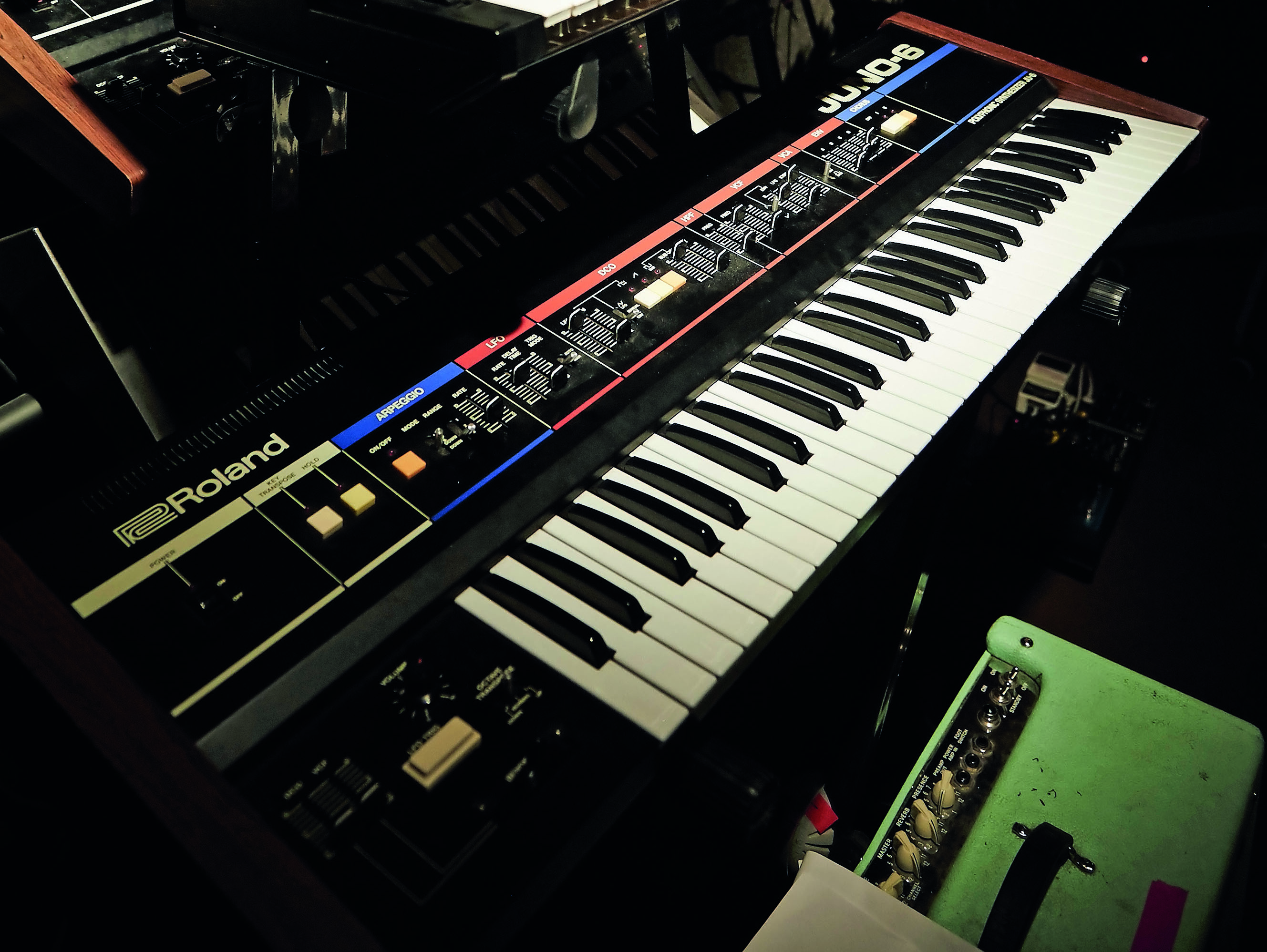
Before we explain why the Juno-6 was such an important synth and such a hit in 1982, it’s important that we have a little prior history lesson first. Roland had got into the polysynth game with the Jupiter 4 in 1978. This plucky synth offered four voices of polyphony (enough for a triad and a topline) going up against the stronger, more authentic Sequential Circuits Prophet 5 and Oberheim OBX.
But at half the price of those legends there had to be some compromises. There was only a four octave keyboard and its thin, reedy sound soon marked it out as second class. Roland put right all the shortcomings with the premium priced Jupiter 8 a year later, but users had to pay the price for such power.

First look: how does Roland's Juno-X synth compare to the Juno-60 and 106?
By 1982 Roland was ready to return to the ‘budget’ arena. Thus the Juno-6 arrived, with the new Juno name marking it out as a separate line to the superior Jupiters which would remain a cut above. In 1982 the world was buzzing with the word ‘digital’ and the Juno sported ‘superior’ digitally controlled oscillators (DCO) that would always remain in tune and be far more accurately controllable. (Thinner? Weaker? Arguable… But that’s progress for you.)
Elsewhere the synth sported many of the same features and looks of its bigger Jupiter brother, even going for the same left to right layout and favouring sliders over knobs. Special mention to the super easy to use Juno-6 arpeggiator, responsible for many an 80s synth line and a vital component to what makes a Juno a classic. Plus that now legendary chorus effect – THE quick and easy way to thicken up the thin Juno sound.
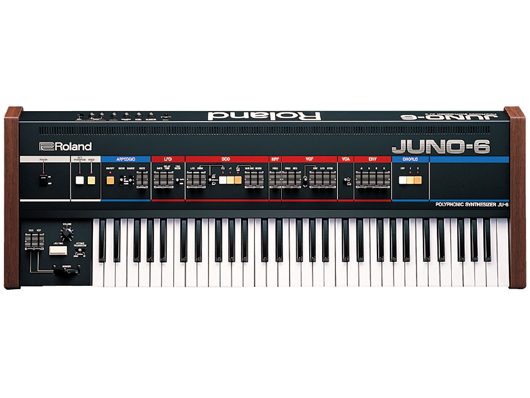
Which all meant that Juno-6 sounded great. Basses were fat and fulsome but it was in the strings/chords/pads/synth stabs department that the Juno excelled and still does to this day. And at £699 it was an absolute bargain and rightfully shifted by the truckload.
Easily many musicians' favourite synth ever, Junos remain an easy to program go-to for any ‘80s style’ synth sound you can imagine. A true, and enduring classic that no modern synthesist – be it via Roland’s own excellent Roland Cloud plug-in, or countless clones such as Cherry Audio’s DCO-106 – should be without.
Want all the hottest music and gear news, reviews, deals, features and more, direct to your inbox? Sign up here.
Juno-60
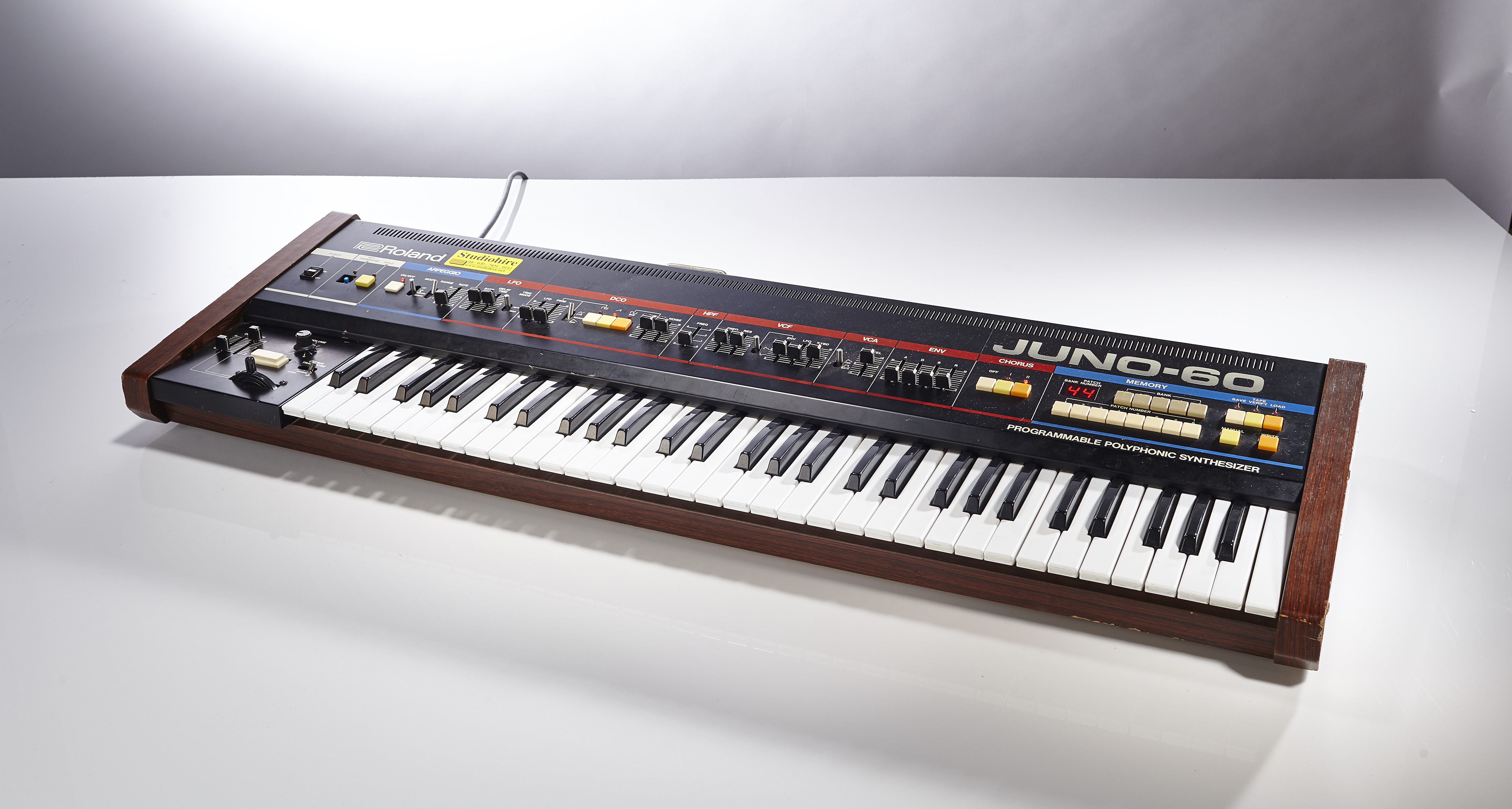
For all its winning good looks and sleek, synthy sound, the market-leading 6 wasn’t without its faults. Most notably it lacked the ability to store and quickly recall sounds, a feature reserved for its pricier big brother, the Jupiter. Thus the scene was set for a major win when – also in 1982 – the Juno-6 became the Juno-60 with 56 patch memories on board. Users could even dump these presets to tape and load them back in later.
And the innovations didn’t end there. The 60 came equipped with a socket for Roland’s new DCB (Digital Control Buss) which allowed it to interface with their JSQ-100 and later MSQ-700 hardware sequencers, allowing users to program notes and have them played back perfectly rather than manually having to play the thing yourself. Imagine…
DCB didn’t last long being introduced at exactly the same time that MIDI was becoming a standard so Roland were soon thoughtfully offering a Roland MD8 box that converted MIDI to DCB so JSQ users didn’t get left high and dry. Yours for an additional £265…

Perhaps the weirdest 60 ‘upgrade’ however was the replacement of the 6’s high pass filter slider which went from a continuous slider to one featuring four preset positions. Easier to use perhaps… but better?
Needless to say the 60 was another winner, effectively upgrading and adding the features missing from the budget priced 6. As for the sound, they’re to all but perhaps the most trained ear absolutely identical, so purchase either with extreme confidence.
Juno-106
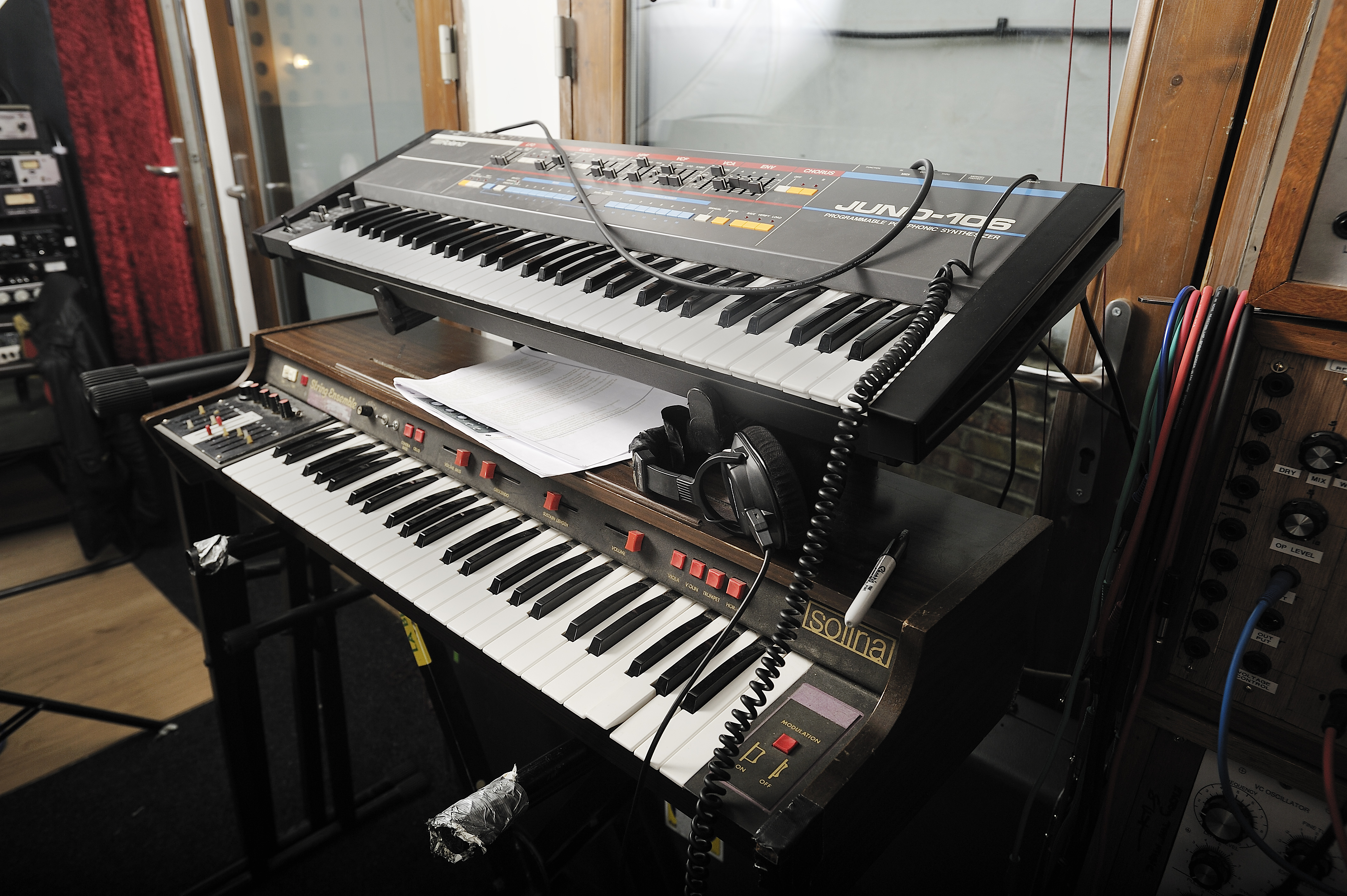
So it works like this. The Juno-6 came first and nailed the sound. The 60 added patch memories. And the 106 added MIDI. But – of course – the story isn’t as simple as that.
After a pair of Junos in 1982, Roland had tried something new in 1983 with the JX-3P. Firstly, it was their first synth to offer MIDI, secondly it featured ‘digital’ controls, forgoing the sliders of the Juno in favour of buttons and a heavily leaning on a large number of admittedly excellent presets.
Blame the Yamaha DX7, also released in 1983, which also featured a similarly knob-free front deck and great presets. However, while the DX7’s console made perfect sense – it was a 100% digital synth producing its sound from a whole new way of thinking (FM synthesis) – the JX-3P was still, at heart, a Juno inside. And needless to say the DX7 thrashed it royally…

So what do for ‘84? It was back to the Juno drawing board basically for an upgraded 60 with a cleaner new look. Yes, the 106 added MIDI but also sported 128 patch memories (up from 56), a new LED display (to make navigating that expanded bank a little easier) and was the first airing of Roland’s push forwards Bender, allowing the previously pitch-only mod control to introduce an LFO into the sound as you play.
And that MIDI implementation took the standard to a whole new level from the simple note on/off and patch change implementation on the JX-3P. On the 106 every slider outputted CC numbers allowing you to program slider changes (and thereby sound tweaks) as part of your sequences.
Which is all great and a huge part of why the 106 went on to become the greatest selling synth of all time. But why (oh why) did the 106 have to lose the 6 and 60’s arpeggiator? Perhaps the thinking was that with such great MIDI on board you could now simply program your own? Ho hum.
Roland MKS-7 Super Quartet
With the 106 going great in ‘84, ‘85 saw the Juno family expand in unusual directions. Appearances can be deceptive and this unassuming black (and released in limited numbers, white) box is something special. Next time you're browsing in the second hand store, pray that you stumble across the MKS-7.
Despite the non-Juno nametag, the MKS-7 is in fact THREE Juno-106s (all able to run different sounds, so the MKS-7 is multitimbral) PLUS a Roland TR-707 drum machine, all in a single box… Wow, what a ‘super quartet’…
There are of course many trade-offs along the way, but none are real deal-breakers. Firstly, there’s the complete lack of knobs and sliders which – given that there’s THREE Junos to tweak inside – is nothing short of criminal. The MKS-7 is purely a preset machine and there are 220 patches on board, split across the machine’s three sections. You see, while the synths on board are pure Juno they’re hobbled in polyphony in interesting ways. Firstly there’s a monophonic Bass section (with 20 presets), then there’s a four-note Chord section (with 100 presets), topped off with a duophonic Lead section (with a further 100 presets). 1 + 4 + 2 = 7. Hence, MKS-7.
It IS possible to adjust the MKS sounds and make them your own, but it has to be done via MIDI CC messages – far from ideal – or you could track down a Stereoping CE-1 Super Quart 7, a small, enterprising box of knobs that returns hand-on control to the Junos hidden within.
The three separate synths are then topped off with a Rhythm section (hence Quartet) with its sounds lifted directly from the also-released-in-1985 Roland TR-707. While not quite as legendary as the 909 that came before it, the 707 nonetheless was huge and its workhorse, super-usable kick, snare, toms and cymbals are all over hits of the era.
Again, there has to be some kind of trade-off here so, in what feels like a completely unnecessary stinge, the MKS-7 lacks the 707’s cowbell, tambourine and second snare sound. Shame. All four parts are then mixed via simple sliders on the front panel to a Mix Out on the back. Mercifully the machine is generous enough to provide separate outs for the four sections too.
If you can handle the lack of controls the MKS-7 delivers the genuine Juno sound and the presets are excellent. They change hands for less than a 106 which is a bit of a bargain given that it’s three of them plus a 707 too.
Juno-106S
The ‘S’ stands for speakers… Yes, it’s a Juno-106… With speakers… And that’s it. The 106S was made in limited numbers for all those Juno fans who lacked additional kit, or simply wanted a synth they could carry around and jam with, without having to pack an amp. Other than that it’s identical to the 106 in every way, but if you’re hell bent on owning the newest, and rarest of all the original Junos, this is the one to hunt down.
HS-60
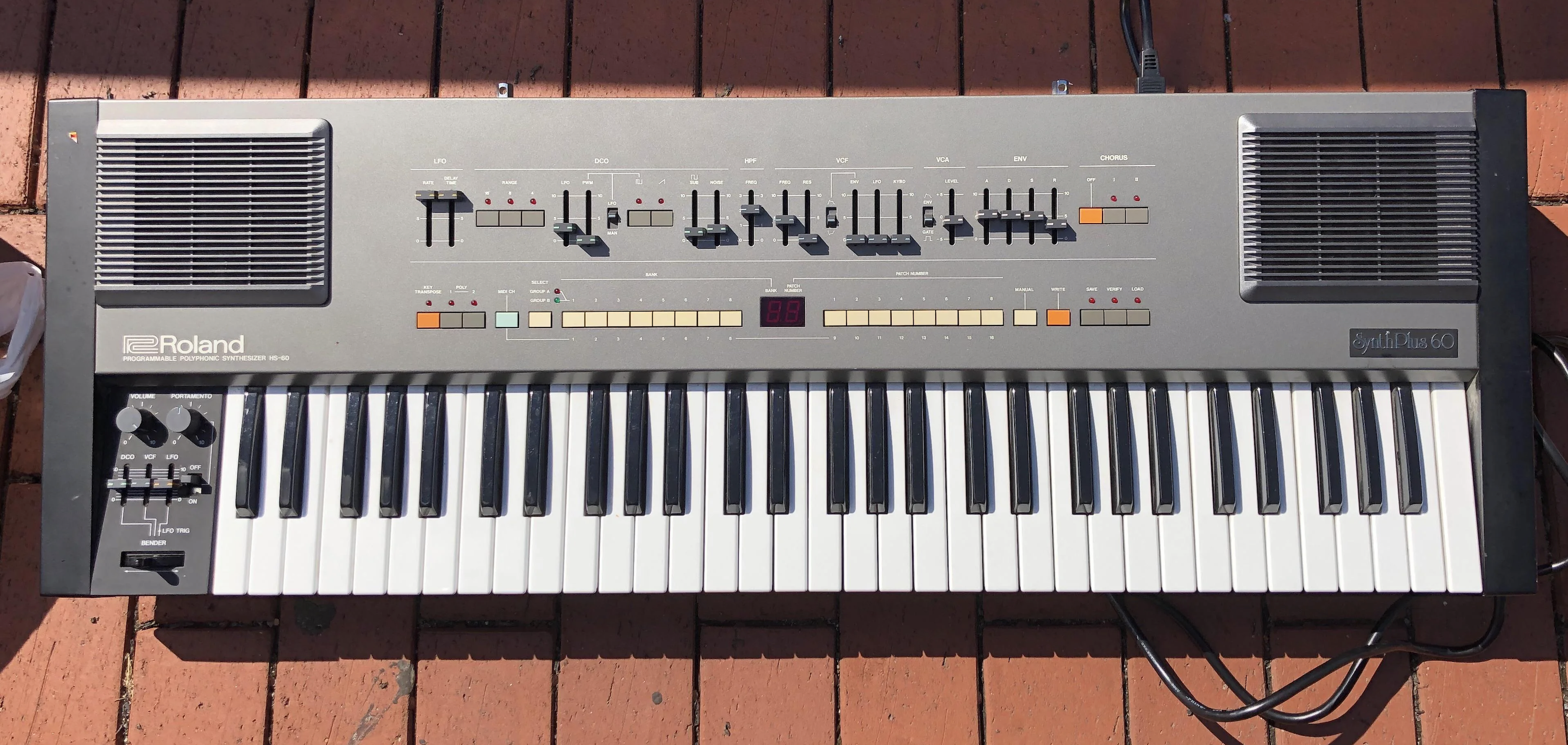
This one is a bit of an oddity. Keen to hoover up their share of the home keyboard market, being dominated by the likes of Yamaha and Casio, Roland created the HS-60 in 1985, essentially a Juno-106S but in even uglier clothing. In fact, other than those stuffy home organ looks, it’s identical in every way… but two.
Firstly it features a stereo Mix In socket, allowing users to plug in other equipment (a tape deck or drum machine etc) and play along with the sound of both coming from the HS-60’s speakers. Secondly – annoyingly – those speakers cannot be turned off so even with a cable plugged into the HS-60 out, leading to your amp or mixer the sound still plays from the speakers too. The only way to thwart this is to plug in headphones – or at the very least anything – into the headphone socket.
The HS-60 used to be the incredible way to bag a genuine Juno on eBay, as its looks were deceptive enough for it to sell for home keyboard prices. However, folks have got hip to its origins and, given its rarity, it’s not unusual for the HS-60 to actually go for a premium these days. You never know though. Keep an eye out at the next car boot sale. There may be an HS-60 lurking within.
Roland Alpha Juno 1 and 2
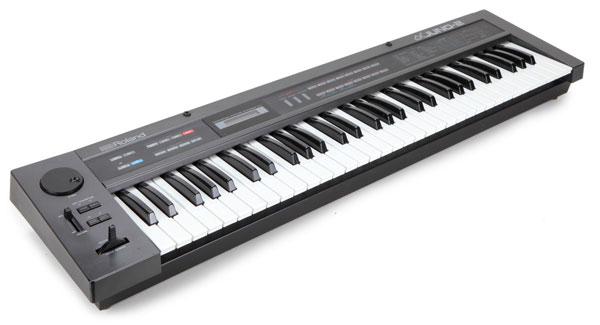
And so the tides began to turn. 1986’s Juno had clearly been paying far too much attention to the Yamaha DX7 (most specifically their cheaper DX9) which continued to steam-roll all in their path. Thus we got our first Juno without tweakable front panel controls and a line of DX-style flat buttons in their place.
All in the name of progress, we were told, as instead we had to get used to selecting parameters with the buttons and then changing their values with the never-ending Alpha Dial. This was the first airing of the Alpha and it would appear on all kinds of Roland synths and sequencers to follow.
Those in need of sliders would have to spend a further £200 on the optional PG-300 controller which – unlike the PG-200 for the JX-3P – didn’t fit on the top of the Alpha. Tsk. And – oddly – the Alpha came in two flavours, the cheaper Juno-1 (£575) had only a four octave keyboard while the Juno-2 had a five octave keyboard that was pressure and velocity sensitive (£799). So, something for everyone…
But while affordable and great-sounding (packed with superb presets to show off their honed DCO's versatility), the Alphas failed to win fans and remain the poor-man’s ‘vintage’ Juno to this day.
HS-10 and HS-80
Just as Roland sought to have their cake and eat it with the HS-60 so they repeated the ‘trick’ for the HS-10. The HS-10 ‘Synth Plus 10’ was an Alpha Juno-1 in slightly worse clothing. And the HS-10 even lacked speakers, rendering the whole exercise completely pointless.
At least the larger HS-80 looked radically different, incorporating speakers and stealing the five octaves of pressure and velocity sensitive keyboard from the Juno-2.
MKS-50

The Alpha Junos also appeared in rackable form with the identically sounding (and PG-300 programmable) MKS-50. Again, not a classic, but if you can find one cheap…
Juno-D

And thus the Juno died… or at least went to sleep for the 1990s as – eager to beat those pesky FM DX synths – Roland finally managed to carve a niche with the D series Linear Arithmetic (LA) synths, which were huge hits. And huge respect to that mid-nineties JD-800.
But, in 2005 with digital wavetable synthesis become ever cheaper, Roland pondered what they could call their new, entry level wavetable synth? Of course, it made perfect sense for Roland - this was a new, affordable synth line… why shouldn’t it be called Juno? Well… because it’s not a Juno?
By now the original Junos had become highly prized. No longer the affordable eBay bargains they once were and in ever-increasing demand. So Roland’s ploy of plonking the Juno name on new (average at best) digital synths felt like a petty cash grab.
The D was quickly upgraded to the ‘Limited Edition’ version which added extra waveforms and samples to more capably cover off the piano and organ departments the original D was lacking in. But sampled piano sounds? Not exactly Juno is it?
Juno-G
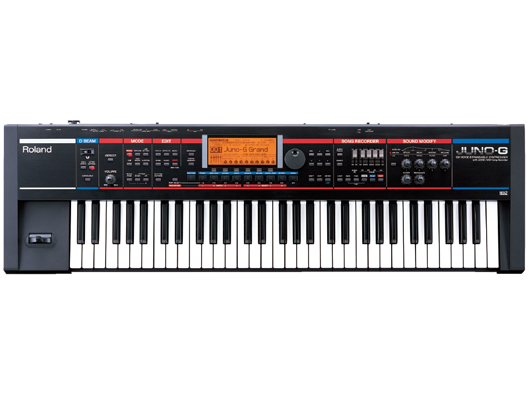
Now you’re going too far. With Roland’s Fantom premium priced workstations selling well, they pondered what could be done at the lower end of the market… Yup, they took a stripped down Fantom and called it a Juno…
That’s not to say that it isn’t an excellent workstation keyboard, with a great sampled piano, sequencer and drum sounds with a top notch keyboard lashed to the front at an affordable price… It’s just not anything like what we imagine when someone says ‘Juno’.
Juno-Di
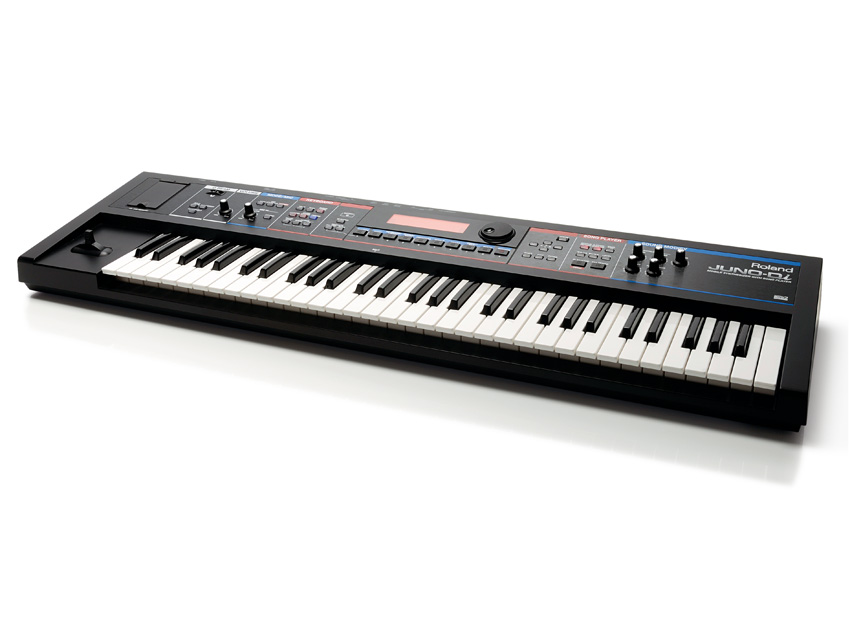
Round about now Roland simply isn't listening. 2007’s new synth is… the synth from two years ago, uprated to 128 note polyphony and with the sounds from the Juno-G. In fact it’s basically a Juno-G without any of the sequencer/workstation bits. Just what we all wanted, right?
Juno-Stage

Time for the Juno brand to go to sleep for a while, and the Juno-Stage is Roland hitting the brand over the head with the overkill mallet. OK. It’s not a bad keyboard and it’s an intriguing idea: how about a simple, stripped-back workstation, packed with usable sound staples (including the sampled pianos from the Fantom), SRX-board compatibility (for adding even more sounds), a lightweight portable frame (for easy gigging) and a six-octave keyboard?
Yeah, fine. But not exactly the fireworks new Juno anyone was hoping for.
JU-06 and JU-06A
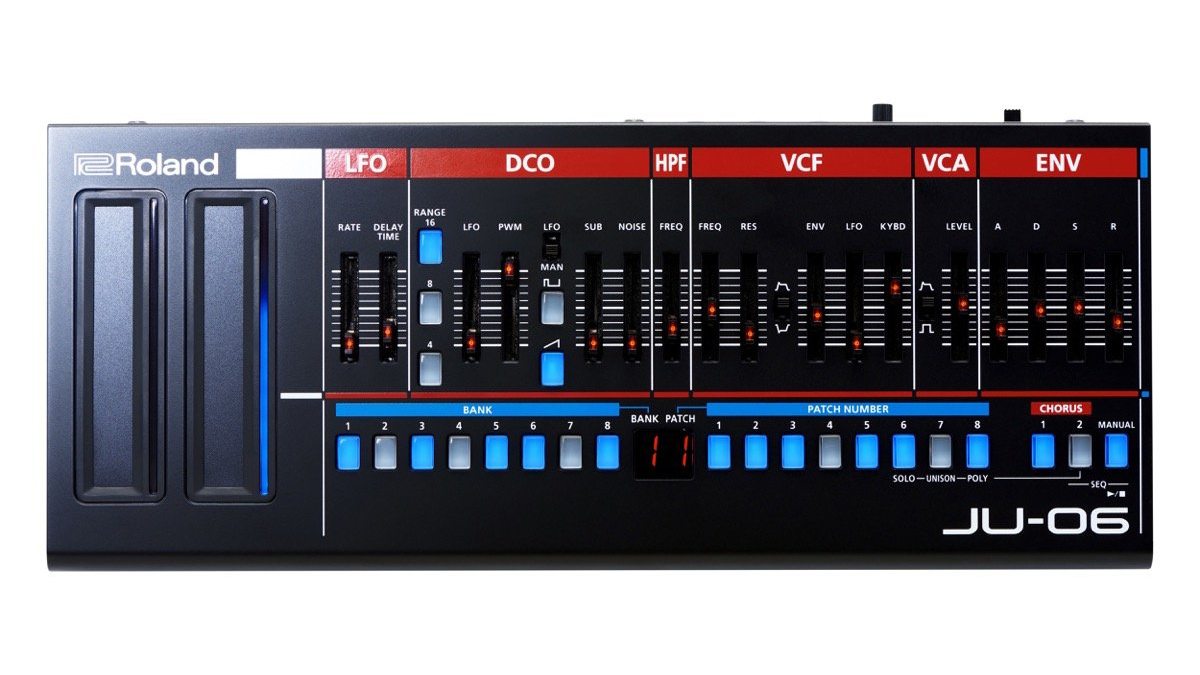
Roland’s Boutiques – released in 2016 – represented a stunning return to form for the company. Finally comfortable in dipping into its retro past and with new ACB tech allowing them to do it affordably (and in miniature), the Roland Boutique mini synths are cut down versions of all their classics that – to all but the most expert ear – sound just the same.

Of course there’s the small matter of having to grapple with those tiny controls but the Boutiques are the bomb, and surprisingly affordable with it. The JU-06 is one of the highlights of the range being a faithful recreation of the 106. The JU-06A released three years later goes even further, featuring a 60/106 switch that allows it to sound like both the 60 and 106, plus the arpeggiator from the original 60 that was cruelly removed from the 106.
Now if only they’d make a full size, proper Juno keyboard too…
Juno-X
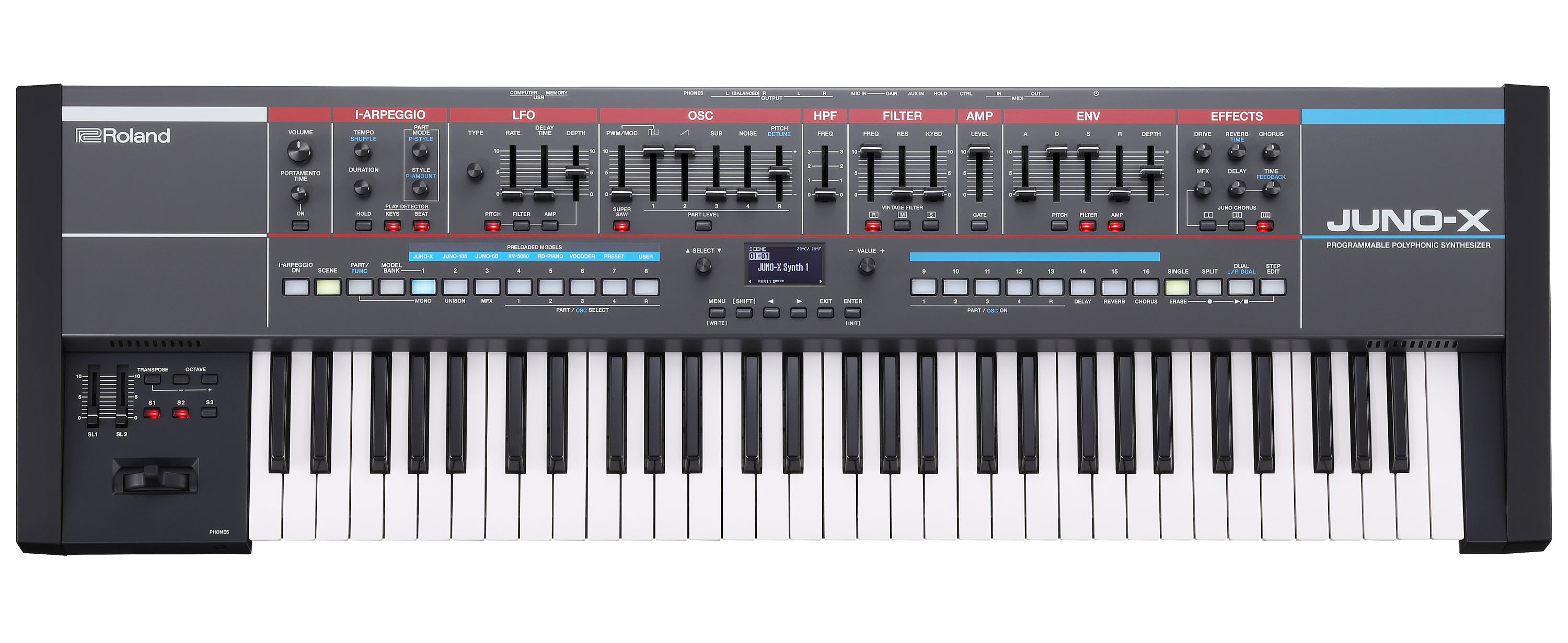
At last. Much water has passed under Roland’s synth bridge since the Stage. They’ve reinvented themselves with a proper, knobular synth (the Gaia), and finally nodded to their retro past with Airas. They’ve gone analogue with their JD-Xi and XA, and surprised and delighted with their Boutiques. The Fantoms are sounding and playing better than ever and Zen Core – the centrepiece of their synth engines – is able to deliver super-accurate analogue emulation to both Fantom and Roland Cloud alike. Time – at last – for a new, genuine Juno.
Of course it’s all digital by now, but Zen Core does the business, allowing the X to accurately sound like a 60 or 106, or even a Jupiter-8, JD-800 or SH-101 thanks to their versatile model expansions. And it’s all inside a case that’s covered with controls and looks the part too.
The Juno-X is Roland setting the brand straight and doing it right for the first ‘real’ Juno since the 106, 33 years earlier. Welcome back.


Daniel Griffiths is a veteran journalist who has worked on some of the biggest entertainment, tech and home brands in the world. He's interviewed countless big names, and covered countless new releases in the fields of music, videogames, movies, tech, gadgets, home improvement, self build, interiors and garden design. He’s the ex-Editor of Future Music and ex-Group Editor-in-Chief of Electronic Musician, Guitarist, Guitar World, Computer Music and more. He renovates property and writes for MusicRadar.com.
